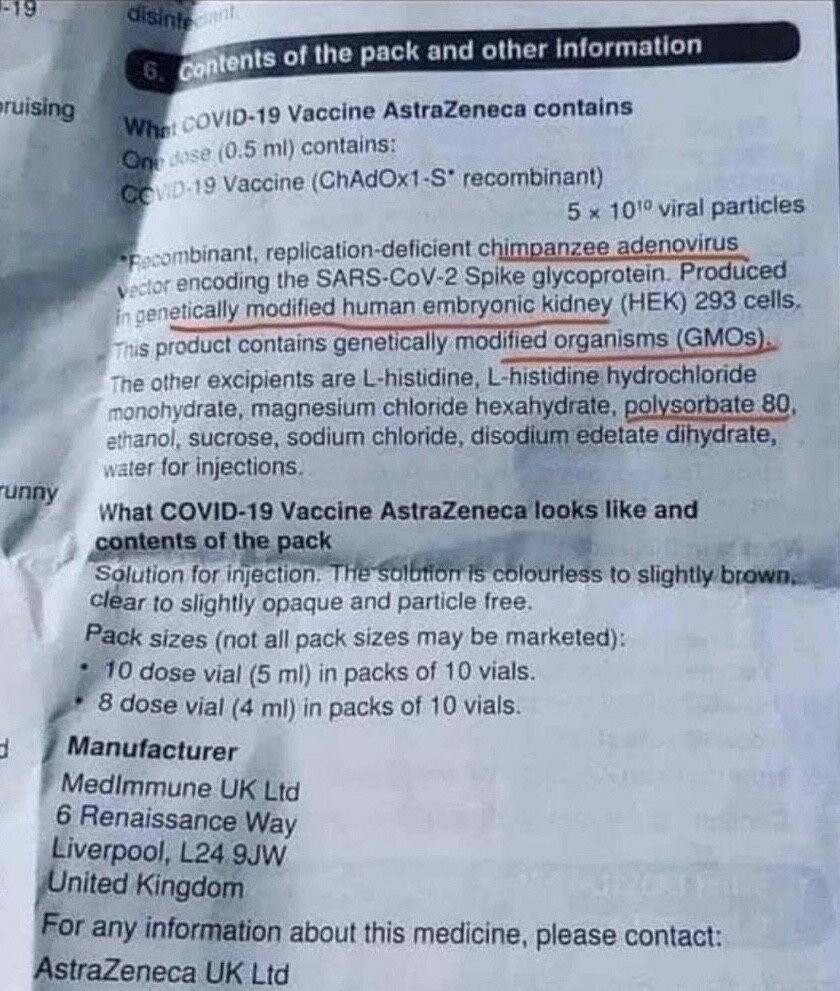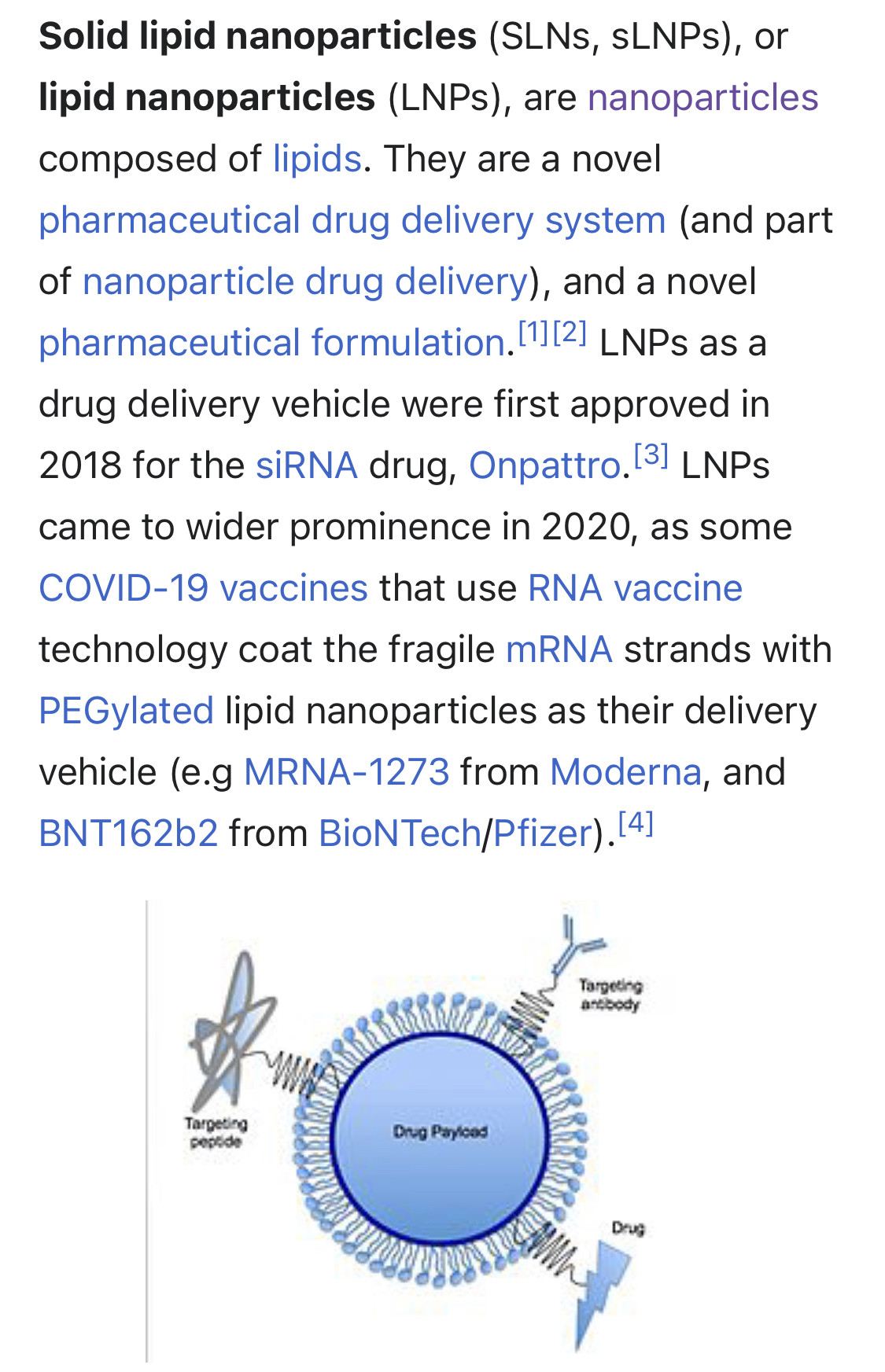A New Creation, Conspiracy Realist, ICU/ER RN. Are U grafted in the Tree of Life or still part of the tree of the Knowledge of GOOD & evil?
by Y Mei · 2012 · Cited by 68 · Related articles
4 Apr 2012 — Both lentivirus and adeno- associated virus (AAV) vectors have been used to deliver optogenetic constructs into genetically ...
by KA McGuire · 2011 · Cited by 73 · Related articles
We demonstrate that ROS are produced within minutes of adenovirus type 5 (Ad5) infection of macrophages and that oxidative stress supports ...
by G Bjørklund · 2020 · Cited by 25 · Related articles
5 Feb 2020 — Children with ASD diagnosis are considered more vulnerable to oxidative stress because of their imbalance in intracellular and ...
Optogenetic regulation of transcription | BMC Neuroscience | Full Text
Optogenetics has become widely recognized for its success in real-time control of brain neurons by utilizing non-mammalian photosensitive proteins to open or close membrane channels. Here we review a less well known type of optogenetic constructs that employs photosensitive proteins to transduce the..
https://bmcneurosci.biomedcentral.com/articles/10.1186/s12868-018-0411-6Principles of Optogenetic Methods and Their Application to Cardiac Experimental Systems
Optogenetic techniques permit studies of excitable tissue through genetically expressed light-gated microbial channels or pumps permitting transmembrane ion movement. Light activation of these proteins modulates cellular excitability with millisecond ...
https://www.ncbi.nlm.nih.gov/pmc/articles/PMC6749684/
by EA Ferenczi · 2019 · Cited by 22 · Related articles
11 Sept 2019 — It is also possible to express optogenetic constructs in neonatal and adult primary ventricular cardiomyocytes using viral vector ...
Of the many viruses screened, adenovirus 36 has been found to be a strong candidate virus that is associated with obesity, based on evidence in various model systems as well as clinical data. The mechanism of how the adenovirus could lead to obesity is not known and this paper proposes some new insights into how oxidative stress could be a possible mechanism of how adenovirus might lead to obesity. This paper reviews the relevant literature of both the effect of adenovirus on cells' anti-oxidant response and the link between obesity and oxidative stress.
"Our results suggest that oxidative stress may be partly responsible for the toxicity of adenovirus transduction."
https://jvi.asm.org/content/76/1/355
Redox Regulation of Adenovirus-Induced AP-1 Activation by Overexpression of Manganese-Containing Superoxide Dismutase | Journal of Virology
Adenovirus gene therapy is a promising tool in the clinical treatment of many genetic and acquired diseases. However, it has also caused pathogenic effects in organs such as the liver. The redox-sensitive transcription factors AP-1 and NF-κB have been implicated in these effects. To study the mechan..
https://jvi.asm.org/content/76/1/355Adenovirus E1A blocks oxidant-dependent ferritin induction and sensitizes cells to pro-oxidant cytotoxicity - ScienceDirect
Ferritin is a protein that oxidizes and sequesters intracellular iron in a mineral core. We have reported that the E1A oncogene selectively represses …
https://www.sciencedirect.com/science/article/pii/S001457939901443X"Concordantly, E1A sensitized cells to the cytotoxic effects of oxidative stress and enhanced the accumulation of reactive oxygen species in response to pro-oxidant challenge. These results demonstrate that expression of E1A impedes the cellular response to oxidative stress, including the induction of ferritin."
Research in Alzheimer disease has recently demonstrated compelling evidence on the importance of oxidative processes in its pathogenesis. Cellular changes show that oxidative stress is an event that precedes the appearance of the hallmark pathologies of the disease, neurofibrillary tangles, and senile plaques.
A viral infection that involves virus invasion, protein synthesis, and virion assembly is typically accompanied by sharp fluctuations in the intracellular levels of metabolites. Under certain conditions, dramatic metabolic shifts can result in various types of cell death. Here, we review different types of adenovirus-induced cell death associated with changes in metabolic profiles of the infected cells.
As evidenced by experimental data, in most cases changes in the metabolome precede cell death rather than represent its consequence. In our previous study, the induction of autophagic cell death was observed following adenovirus-mediated lactate production, acetyl-CoA accumulation, and ATP release, while apoptosis was demonstrated to be modulated by alterations in acetate and asparagine metabolism.
On the other hand, adenovirus-induced ROS production and ATP depletion were demonstrated to play a significant role in the process of necrotic cell death. Interestingly, the accumulation of ceramide compounds was found to contribute to the induction of all the three types of cell death mentioned above. Eventually, the characterization of metabolite analysis could help in uncovering the molecular mechanism of adenovirus-mediated cell death induction and contribute to the development of efficacious oncolytic adenoviral vectors.
Oxidative stress is involved in the pathogenesis of many diseases. Overexpression of antioxidant enzymes by gene therapy may protect tissues from oxidative damage. Because the reactive oxygen species hydrogen peroxide can diffuse across cell membranes, we hypothesized that overexpression of the antioxidant catalase within certain cells might protect neighboring cells.
To test this hypothesis, we transduced retinal pigment epithelial (RPE) cells in vitro and in vivo with adenovirus carrying the catalase gene (Ad.CMV.catalase). After transduction of only a subset of RPE cells in vitro, all cells in the culture were protected from exogenous hydrogen peroxide. Similarly, in vivo, eyes injected with Ad.CMV.catalase had high catalase levels in the RPE, which protected the adjacent
photoreceptors from light damage and reduced photoreceptor oxidative stress
as measured by the markers 4-hydroxynonenal and nitrotyrosine.
Opsins are a group of proteins made light- sensitive via the chromophore retinal (or a variant) found in photoreceptor cells of the retina.
Quantum effect
While in the retina, the nanoparticles are stimulated by visible light entering the eye – and if a quantum dot is stimulated while it is in close proximity to a neural cell, it triggers an action potential in that cell which is interpreted as vision by the brain.
by A Khatchadourian · 2009 · Cited by 46 · Related articles
Certain nanoparticles can induce lipid droplet formation under oxidative stress conditions.
by V Kumar · 2018 · Cited by 12 · Related articles
Many recently published reports have shown that nanoparticles impart oxidative stress and cellular damage in plant systems and in response, ...
Oxidative stress induced by engineered NP is due to acellular factors such as particle surface, size, composition, and presence of metals
Role of oxidative stress in nanoparticles toxicity
by M Horie · 2020 · Related articles
18 Dec 2020 — Various types of nanoparticles are known to induce oxidative stress by generating intracellular reactive oxygen species ( ROS).
ROS in apoptosis and cell survival. Disproportional increase in intracellular ROS can induce cancer cell cycle arrest, senescence and apoptosis. This can be achieved with cancer chemotherapy, depletion of cells from antioxidant proteins or generation of ROS by immune cells.
Reactive oxygen species in cancer
by GY Liou · 2010 · Cited by 1968 · Related articles
Elevated rates of reactive oxygen species (ROS) have been detected in almost all cancers, where they promote many aspects of tumor ...
Photosynthesis is a well-established source of reactive oxygen species (ROS) in plants. The photosynthetic electron transport chain (PET) operates in an aerobic environment; thus, regulatory systems are required to minimize ROS production.
Scientists have found that a virus can stimulate photosynthesis in bacterial hosts. The work, which was performed at the University of Kaiserslautern and Ruhr University Bochum was reported in the Journal of Biological Chemistry.
26 Feb 2017
"a virus can stimulate photosynthesis in bacterial hosts."
Some bacteria are able to use a process called photosynthesis to convert energy from sunlight into another form of energy they can use to grow. Within the bacteria, structures known as photosystems are responsible for absorbing light and transferring the energy to other molecules.
God bless you all. 🙏🏻
"To be very specific, NPs either boost up the photosynthesis processes by improving LHC (Light Harvesting Complex) in plants or hinder their pathways by blocking ETC (Electron Transport Chain) and they affect photosynthetic rate by change in several genes and enzymes like Carbonic anhydrase, RUBISCO and PEP caboxylase."
Lanthanide-doped upconversion nanoparticles (UCNPs) are capable of converting near-infra-red excitation into visible and ultraviolet emission. Their unique optical properties have advanced a broad range of applications, such as fluorescent microscopy, deep-tissue bioimaging, nanomedicine, optogenetics, security labelling and volumetric display.
However, the constraint of concentration quenching on upconversion luminescence has hampered the nanoscience community to develop bright UCNPs with a large number of dopants. This review surveys recent advances in developing highly doped UCNPs, highlights the strategies that bypass the concentration quenching effect, and discusses new optical properties as well as emerging applications enabled by these nanoparticles.
Upconversion nanoparticles (UCNPs) are a unique class of optical nanomaterials doped with lanthanide ions featuring a wealth of electronic transitions within the 4f electron shells. These nanoparticles can up-convert two or more lower-energy photons into one high-energy photon1,2,3.
Lambda switching (sometimes called photonic switching, or wavelength switching) is the technology used in optical networking to switch individual wavelengths of light onto separate paths for specific routing of information.
In the 1980s, Nobel laureate Francis Crick suggested that light might have the right stuff for controlling neurons of different types, thanks to its ability to provide timed pulses with millisecond temporal precision. However, light penetrates only a few hundred microns into the surface of the brain, scattering without affecting signaling. The challenge became: How can we get the brain to respond to light? This question gave rise to the field of optogenetics, and the emerging idea of replacing electrical stimulation with a combination of optics and genetic modification.
In just over a decade, the discovery of numerous opsins with different specializations has allowed scientists and engineers to make rapid progress in mapping brain activity.
In the early 2000s, researchers Edward Boyden and Karl Deisseroth at Stanford University, USA, approached the problem by attempting to genetically encode brain cells with photosensitive properties. In 2004, they successfully confirmed that the opsin called channelrhodopsin, a microbial photosensitive protein derived from algae, could be transduced into neurons to control their electrical signaling, turning them on by opening neuronal ion channels in response to pulses of blue light.
Other opsins followed, including those that suppress neuronal activity; for example, halorhodopsin can silence the neurons in the hypothalamus, inducing sleep in living mice.
In 2013, the Obama administration announced a collaborative public-private effort, the Brain Research through Advancing Innovative Neurotechnologies (BRAIN) Initiative.
The ten-year initiative aims to support the development and application of technology that will help in understanding the human brain and treat brain disorders such as Alzheimer’s disease, traumatic brain injury, epilepsy and autism. In October 2017, the U.S. National Institutes of Health (NIH) announced 110 new awards totaling US$169 million, bringing the total funding of the BRAIN program for 2017 to US$260 million. The 21st Century Cures Act, passed in December 2016, earmarked another $1.6 billion to the BRAIN Initiative over 10 years.
That may sound like a lot. But NIH estimates that the total funding needed to map the human brain in action over the course of a decade is around $4.5 billion.
Today, Boyden’s goal is to be able to map the brain and control it with enough precision to treat all brain disorders and simulate thoughts and feelings in a computer.
Although light is inherently easier to control and aim when directed into tissue, it still scatters and diminishes over distance, reducing its effect. Boyden, now associate professor of biological engineering and brain and cognitive sciences at the MIT Media Lab and McGovern Institute (Cambridge, Mass., USA), and colleagues including coauthor Valentina Emiliani (Paris-Descartes, Paris, France) recently published results of a new optogenetic technique that addresses this issue.


